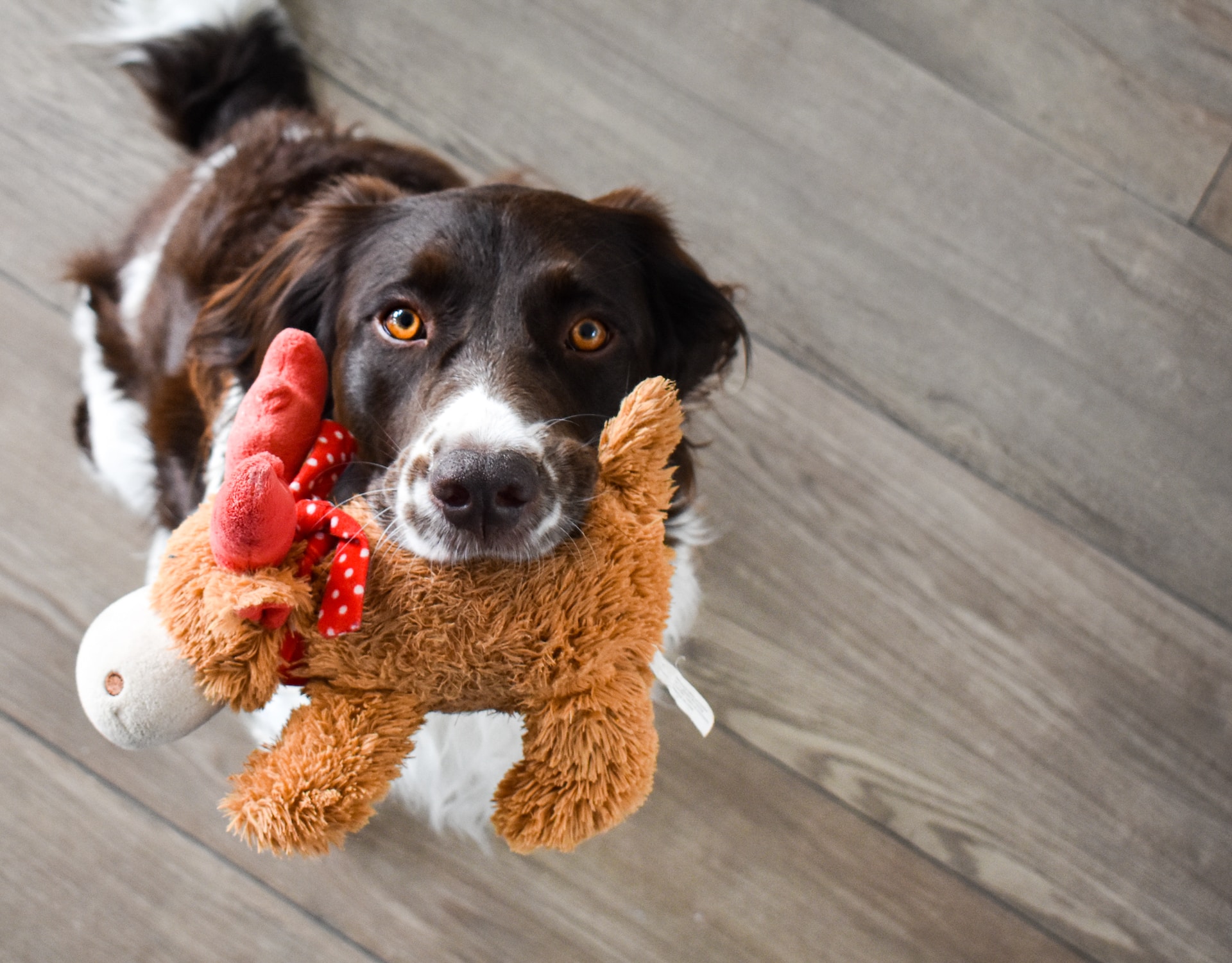
16 Jun What are the Best Types of Toys for My Dog to Play With?
Dogs are known for their enthusiastic chewing and playing, so it’s important to choose toys that can withstand their rough play.
For instance, soft, bendable, and rubber toys are often more durable than toys made from other materials. Plush toys can last a long time for dogs that do not like to chew regularly. But plush toys may not be the best option for dogs that are aggressive chewers or tend to tear apart toys.
Why Rubber & Plush Toys Are Best for Your Dog
Regularly inspecting the toy for any signs of damage and replacing it if necessary, will help ensure your dog’s safety during play. Rubber and plush toys are less likely to break or splinter, reducing the risk of the dog swallowing or choking on small pieces.
Safe to Play With
Soft, bendable, and rubber toys are designed with the safety of dogs in mind. These toys are generally made from non-toxic materials that are safe for dogs to chew and play with. Unlike hard toys, they are less likely to cause injuries to the dog’s teeth, gums, or mouth.
Most soft plush toys are also made with non-toxic safe materials for dogs to chew and play with. Plus, they are typically machine washable or easy to clean, allowing you to maintain hygiene and keep the toy fresh for your dog to enjoy.
Provide Stimulation
Dogs enjoy toys that provide different textures and sensations when chewed or played with. Soft toys usually have a plush or fabric texture that can be comforting for dogs, while rubber toys may have ridges, bumps, or grooves that add tactile stimulation.
These features can engage a dog’s senses and provide mental and physical stimulation during play. For example, chewing on soft plush and rubber toys can provide relief for teething puppies by soothing their gums.
Encourage Exercise
These toys are often designed for interactive play between dogs and their owners or other dogs. Many of these toys can be easily gripped, thrown, or tossed, allowing for engaging games of fetch or tug-of-war.
The pliability of these toys makes them easy to manipulate, which encourages dogs to engage in exercise. While soft plush and rubber toys are generally considered safe and suitable for most dogs, monitoring your dog’s playtime is important to ensure they don’t ingest any parts of the toy or accidentally swallow it.
Regularly inspect the toys for any signs of wear and replace them if they become damaged or worn out to maintain a safe play environment for your pet. For dogs that like to play tug-o-war, it is important not to pull excessively hard or snap the toy out of the dog’s mouth. Playing tug-o-war too rough can damage teeth or the dog’s jaw.
Versatility
Plush rubber toys come in a wide variety of shapes, sizes, and colors. This versatility allows dog owners to choose toys that best suit their dog’s preferences and play style. Some toys may have added features like squeakers or treat-dispensing capabilities, which can make playtime even more exciting and rewarding for dogs. Incorporating both active toys and puzzle toys is the best way to keep your dog entertained when you are home or away.
Avoid Hard Dog Toys
If you are unable to bend a toy with your hands or imprint your fingernail into the toy, then the toy is too hard for your dog’s teeth. Dogs have weaker teeth than people with 3-4 times the jaw strength. When offering hard items to chew they are at risk of fracturing their teeth. A fractured tooth is extremely painful and can lead to an abscessed tooth which is even more painful. Hard chews and hard toys include deer antlers, marrow bones, calf hooves, bully sticks, plastic toys, and nylon bones.
If you believe a chew or a toy you already have at home is too hard because they do not bend, it is recommended to take them away from your dog. Even for dogs that do not chew, hard toys are not recommended. Throwing hard toys for dogs to catch can fracture teeth or damage the teeth enough to kill a tooth. A dead, or nonvital tooth, is typically discolored compared to the other teeth. A nonvital tooth is typically pink to purple colored or has a dead white appearance.
Images used under creative commons license – commercial use (6/16/2023). Photo by Jesper Brouwers on Unsplash

